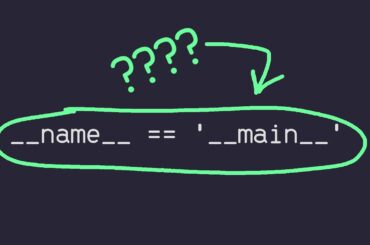In Python, a list is a collection of ordered and mutable objects, which means that you can store a sequence of values or objects in a particular order, and you can modify that sequence by adding, removing, or changing the items within it. Python Lists are denoted by square brackets [] and individual items are separated by commas.
Table of Contents
For example, you can create a list of integers as follows:
my_list = [1, 2, 3, 4, 5]You can also create a list of mixed data types, such as strings and integers, as follows:
my_list = ["apple", 2, "banana", 4, "cherry"]Lists support a number of built-in operations, such as appending and removing items, and accessing elements by index, slicing, sorting, and more. Lists are one of the most frequently used data structures in Python, and they are very versatile and powerful.
Creating a List in Python
In Python, you can create a list by enclosing a sequence of comma-separated values or items within square brackets. Here’s an example:
# create a list of integers
my_list = [1, 2, 3, 4, 5]
# create a list of strings
my_list = ['apple', 'banana', 'cherry', 'date']
# create a list of mixed data types
my_list = [1, 'apple', 2.5, 'banana']You can also create an empty list and then add items to it later using the append() method or by concatenating two or more lists using the + operator. Here are some examples:
# create an empty list
my_list = []
# add items to the list using the append() method
my_list.append(1)
my_list.append(2)
my_list.append(3)
# add items to the list by concatenating two or more lists
my_list = my_list + [4, 5, 6]You can also use a loop to create a list of values. Here’s an example:
# create a list of squares of numbers from 1 to 5
my_list = []
for i in range(1, 6):
my_list.append(i**2)
# prints [1, 4, 9, 16, 25]
print(my_list)These are just a few examples of how you can create a list in Python. Once you have created a list, you can access, modify, and perform various operations on the list using Python’s built-in list methods.
Accessing data from Lists
In Python, you can access individual items or a range of items from a list using their index. The index of the first item in the list is 0, and the index of the last item is len(my_list) - 1, where my_list is the name of the list.
To access an item from the list, you can use square brackets [] and specify the index of the item you want to access. Here’s an example:
my_list = ['apple', 'banana', 'cherry', 'date']
print(my_list[0]) # prints 'apple'
print(my_list[2]) # prints 'cherry'You can also use negative indexing to access items from the end of the list. In this case, the index of the last item is -1, the index of the second last item is -2, and so on. Here’s an example:
my_list = ['apple', 'banana', 'cherry', 'date']
print(my_list[-1]) # prints 'date'
print(my_list[-2]) # prints 'cherry'You can also access a range of items from the list using slicing. To slice a list, you can use the colon : operator, which separates the start index from the end index. Here’s an example:
my_list = ['apple', 'banana', 'cherry', 'date']
print(my_list[1:3]) # prints ['banana', 'cherry']In this example, the slice starts from index 1 (inclusive) and ends at index 3 (exclusive), so it includes items at index 1 and 2, but not 3.
You can also omit the start or end index to slice from the beginning or end of the list, respectively. Here are some examples:
my_list = ['apple', 'banana', 'cherry', 'date']
print(my_list[:2]) # prints ['apple', 'banana']
print(my_list[2:]) # prints ['cherry', 'date']
print(my_list[:]) # prints the entire listThese are just a few examples of how you can access data from a list in Python. Once you have accessed the items, you can use them in your program, modify them, or perform various operations on them using Python’s built-in list methods.
Updating data in Lists
In Python, you can update the data in a list by assigning a new value to an existing index. Here’s an example:
my_list = ['apple', 'banana', 'cherry', 'date']
my_list[1] = 'orange'
print(my_list) # prints ['apple', 'orange', 'cherry', 'date']In this example, we updated the value at index 1 from ‘banana’ to ‘orange’.
You can also update a range of values in a list using slicing. Here’s an example:
my_list = ['apple', 'banana', 'cherry', 'date']
my_list[1:3] = ['orange', 'grape']
print(my_list) # prints ['apple', 'orange', 'grape', 'date']In this example, we updated the values at indices 1 and 2 to ‘orange’ and ‘grape’, respectively.
You can also append a new item to the end of the list using the append() method. Here’s an example:
my_list = ['apple', 'banana', 'cherry', 'date']
my_list.append('elderberry')
print(my_list) # prints ['apple', 'banana', 'cherry', 'date', 'elderberry']In this example, we added a new item ‘elderberry’ to the end of the list.
You can also insert a new item at a specific index using the insert() method. Here’s an example:
my_list = ['apple', 'banana', 'cherry', 'date']
my_list.insert(2, 'orange')
print(my_list) # prints ['apple', 'banana', 'orange', 'cherry', 'date']In this example, we inserted a new item ‘orange’ at index 2, which pushed the existing item ‘cherry’ to index 3.
These are just a few examples of how you can update the data in a list in Python. Once you have updated the list, you can access, modify, or perform various operations on the updated list using Python’s built-in list methods.
Deleting data in Lists
In Python, you can delete data from a list using various built-in methods. Here are some ways to delete data from a list:
Using the del statement: The del statement can be used to delete an item or a range of items from a list by specifying the index or slice. Here’s an example:scss
my_list = ['apple', 'banana', 'cherry', 'date']
del my_list[1]
print(my_list) # prints ['apple', 'cherry', 'date']In this example, we deleted the item at index 1, which was ‘banana’.
Using the remove() method: The remove() method can be used to remove the first occurrence of a specified value from the list. Here’s an example:
my_list = ['apple', 'banana', 'cherry', 'date']
my_list.remove('banana')
print(my_list) # prints ['apple', 'cherry', 'date']In this example, we removed the first occurrence of ‘banana’ from the list.
Using the pop() method: The pop() method can be used to remove an item from the list at a specified index, and it also returns the removed item. If you don’t specify an index, the last item in the list is removed. Here’s an example:
my_list = ['apple', 'banana', 'cherry', 'date']
removed_item = my_list.pop(1)
print(my_list) # prints ['apple', 'cherry', 'date']
print(removed_item) # prints 'banana'In this example, we removed the item at index 1, which was ‘banana’, and stored it in the variable removed_item.
Using the clear() method: The clear() method can be used to remove all items from the list, making it empty. Here’s an example:
my_list = ['apple', 'banana', 'cherry', 'date'] my_list.clear() print(my_list) # prints []In this example, we removed all items from the list using the clear() method.
These are just a few examples of how you can delete data from a list in Python. Once you have deleted the data, you can access, modify, or perform various operations on the updated list using Python’s built-in list methods.
Summary
In Python, a list is a built-in data structure that can store a collection of items of different data types. Lists are mutable, which means you can add, remove, or modify the items in the list.
To create a list, you enclose a comma-separated sequence of items in square brackets. You can access the items in the list using their index, which starts from 0, and you can also access a range of items using slicing.
You can add items to a list using the append() method, insert items at a specific position using the insert() method, or add multiple items to the list using the extend() method. You can update the items in a list by assigning a new value to an existing index or a range of indices using slicing.
You can remove items from a list using various built-in methods, such as the del statement, remove() method, pop() method, or clear() method.
In addition, Python provides several built-in list methods for performing various operations on the list, such as sorting, reversing, counting, finding the index of an item, and more.
Overall, lists are a powerful and versatile data structure in Python, and they are used extensively in many Python programs for storing and manipulating collections of data.


